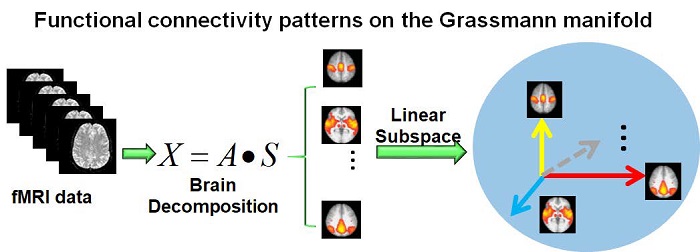Grassmann manifold learning for discriminant analysis of functional connectivity patterns — Functional connectivity patterns

Large scale functional brain networks, extracted from fMRI images using brain decomposition methods, have been informative for distinguishing brain states of cognitive functions and brain disorders. We have developed a manifold learning technique for discriminant analysis of functional brain networks jointly at an individual level, rather than analyzing each network separately. The functional brain networks of each individual are used as bases for a linear subspace, referred to as a functional connectivity pattern, which facilitates a comprehensive characterization of fMRI data. The functional connectivity patterns of different individuals are analyzed on the Grassmann manifold by adopting a principal angle based Riemannian distance. In conjunction with a support vector machine classifier, a forward component selection technique is proposed to select independent components for constructing the most discriminative functional connectivity pattern. The discriminant analysis method has been applied to fMRI studies of schizophrenia, Alzheimer’s disease, Wilson's disease, and smokers [14-17] .

